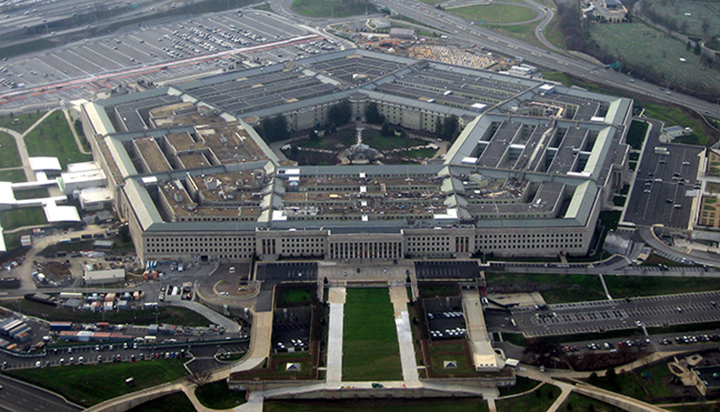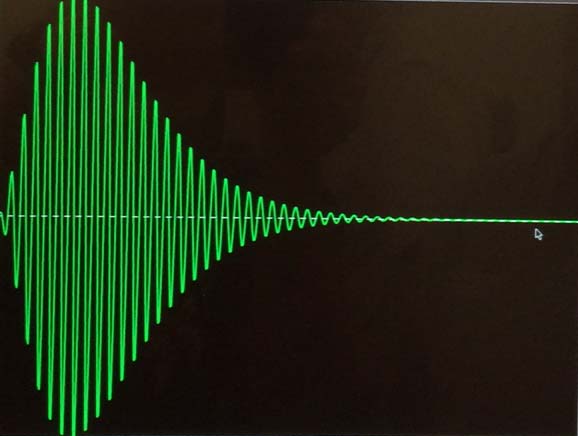A decision by the Department of Defense (DoD) may be what’s holding up action on the Air Force’s $10 billion plan to build 22 new GPS IIIF satellites and could increase the chances of further, perhaps substantial, delays.
The Pentagon has determined that the GPS III Follow-On Production program (GPS IIIF) is a “new start” under its rules.
"The Department of Defense has concluded that this effort is a new program and will be a new start in future budgets," said an Air Force spokesman in response to a query from Inside GNSS.
The designation is important because the DoD’s 2018 budget, like that of other federal agencies, remains snarled in congressional wrangling. The recent government shutdown was ended by the passage of yet another continuing resolution or CR, a stopgap funding mechanism passed to buy more negotiating time. A “new start” program cannot proceed under a CR — so the GPS IIIF program is stuck until a DoD funding measure is signed into law or a special exception is made.
The current CR expires February 8. Should lawmakers fail to reach agreement they can pass another CR and buy still more time. Congress has become accustomed to using multiple CRs and it is even possible, though perhaps unlikely, that a CR could be implemented that covers the rest of the fiscal year — that is through the end of September.
Mike Tierney, a senior consultant and budget expert with the defense, space/intelligence, homeland security consulting firm Jacques and Associates, said there hasn’t been a full-year CR in a long time and lawmakers, perhaps a bit worn after the budget fight and shutdown, appear be getting closer to a deal.
"Typically, when it comes to a time when push comes to shove, Congress finds a way to pass a full year bill," Tierney said.
On the other hand, he added, he was shocked by the government shutdown. "I’m speaking from the fact that we haven’t had a full year CR in a long time — but we are in new uncharted territory…so I shouldn’t let history dictate too much or influence me too much."
Surprise
The experts who spoke to Inside GNSS were very surprised at the new start designation, though they acknowledged the degree of esoterica that can be involved in making such a decision.
In federal procurement circles a new start program involves a new procurement line item or a major new component of a program that has not been justified previously, according to Defense Acquisition University, a military organization. The devil is in the details, of course — particularly the supporting paperwork — and the experts each said there could be something in the determination process with which they were unfamiliar.
Even so, said one expert familiar with the GPS program, "something’s not right there."
"If you want to have success in acquisition of multiple systems," said the source, who requested anonymity to be able to speak freely, "you call the follow-on contracts sustainment contracts. I don’t care what it is, because a sustainment contract doesn’t have to go through all this rigmarole and you can continue to make improvements on it without having, again, to go through the JROC and all that stuff."
JROC Approval Shifts
The JROC is the Joint Requirements Oversight Council — a panel of senior Pentagon officials that scrutinizes every major military procurement. As of last fall they were to approve the requirements-related paper called the capability development document (CDD) before the release of the GPS IIIF Request for Proposals (RFP).
“There is always a chance something will come up,” Gen. John F. Thompson, commander of the Space and Missile Systems Center in Los Angeles, California, told reporters in early November. “I really would like to get that RFP out, but I have no desire to put one out there and then have to modify it because of a change in the CDD.”
Now, according to the Air Force, “The CDD will be JROC approved prior to contract award, which is projected in late 2018."
"The bidders need to bid against requirements," said Tierney, "and typically you know that’s part of the solicitation process in order for them to qualify and price their bids."
However, it may be, he said, that the requirements are so clearly defined that the Air Force is not worried about any tweaks.
"There’s a parsing there, where they may not have a JROC validated CDD by the time the RFP goes out, but they could have very well-defined scope of requirements that are not substantially going to deviate no matter what the JROC validates, where they feel comfortable proceeding with the RFP," Tierney said.
Those who spoke to Inside GNSS did not believe that the new start designation and the change in schedule reflected some technical shift in the program.
"My thought says there is minimal change to the whole thing," said the first expert. "So therefore they’re not much concerned that, whatever the outcome of the JROC. It’s just a proforma-type check-the-box and not going to make any difference."
You’re Late
The GPS IIIF RFP was initially expected to be out in the summer of 2017, then in September, then early December — and then by the end of the year. According to the spokesman, the Milestone Decision Authority approved initiation of the IIIF program on Dec 11, 2017. The RFP’s release is now expected by the end of March.
The spokesman also said the recent delays were not due to the congressionally ordered reorganization of Air Force space procurement now underway.
"The Air Force delayed the release of the RFP to the first quarter of calendar year 2018," the spokesman said, "to ensure the RFP published allows for a fair and open competition."
The spokesman did not respond by press time to a request to elaborate on the issue that caused concern about the fairness and openness of the competition.
Pressure
There may be another reason for the new start designation, suggested an Air Force watcher who asked not to be identified to be able to discuss the matter — a reason that goes beyond procurement rules. The designation actually may be designed to incentivize Congress toward completing the budget process and not relying on additional CRs.
The source noted that it was in the Air Force’s interest to define things that Congress likes, prioritizes and wants to see succeed as new programs because "that allows them to exert pressure back on Congress to say, ‘You need to not be doing CRs, because if you do a CR, things like GPS IIIF will be delayed because that’s a new start.’ "
"My belief is it could be much more on the political side than on the operational side," agreed the source familiar with the GPS program. However, they said, not moving quickly to get the new satellites into the sky creates a different kind of risk — a risk that arises when the urgency to get advanced capabilities into orbit gets lost amidst repeated delays.
"As all of this goes on we are continually in a situation where we have more than enough satellites for the constellation," the expert said. "We have extra satellites that are sitting in sleep mode that can be turned on when necessary."
The GPS IIF satellite contract was let in 1996 with the idea of having all the satellites in orbit by 2005, the source said. As it worked out, not even all of the earlier GPS IIRs were in orbit by 2005. "So, you say, ‘Well how soon do I have to get this new contract on?’ "





